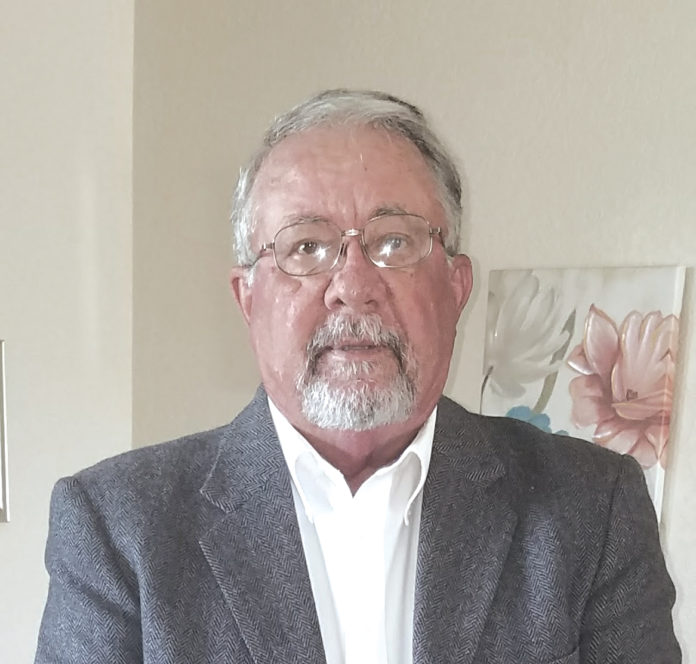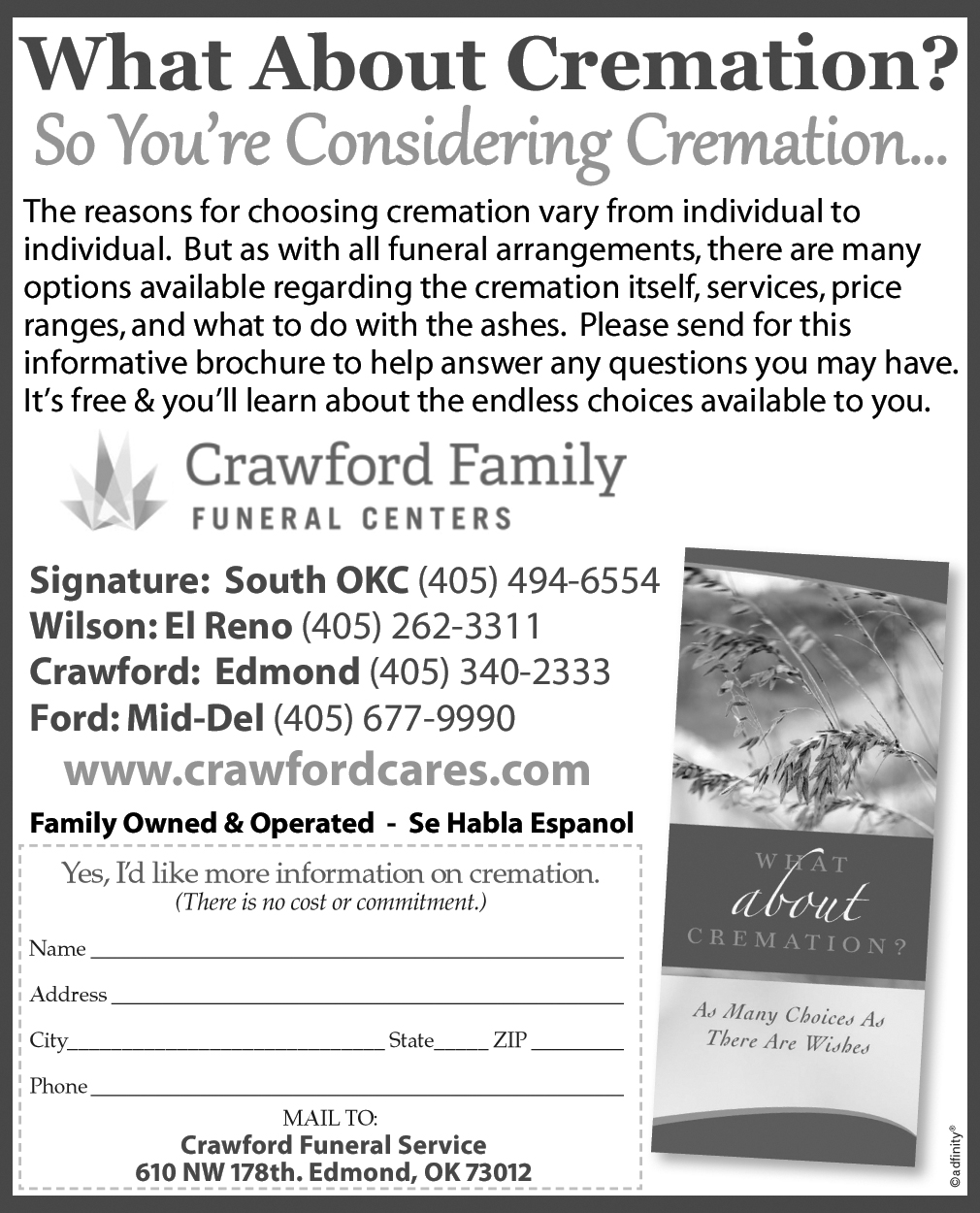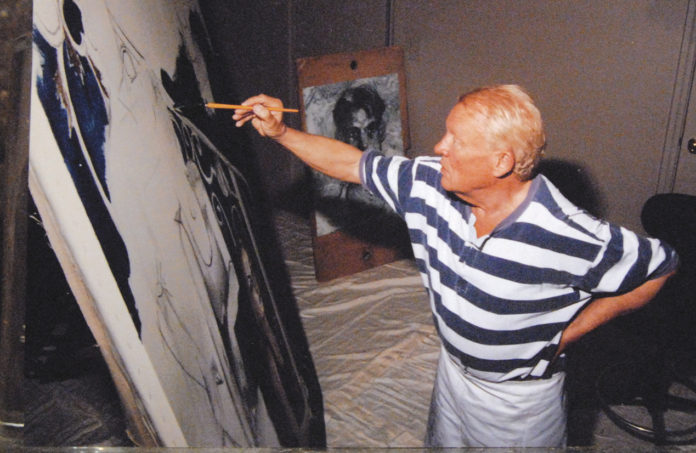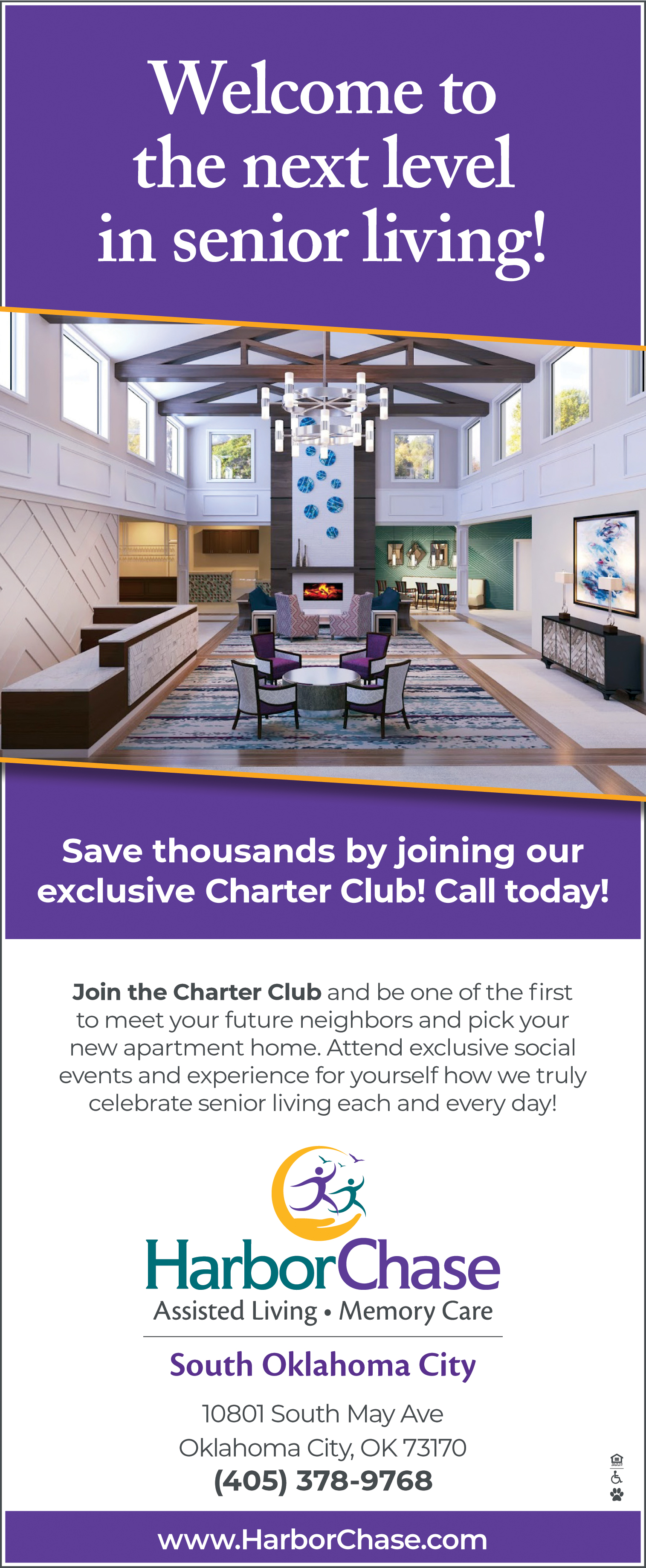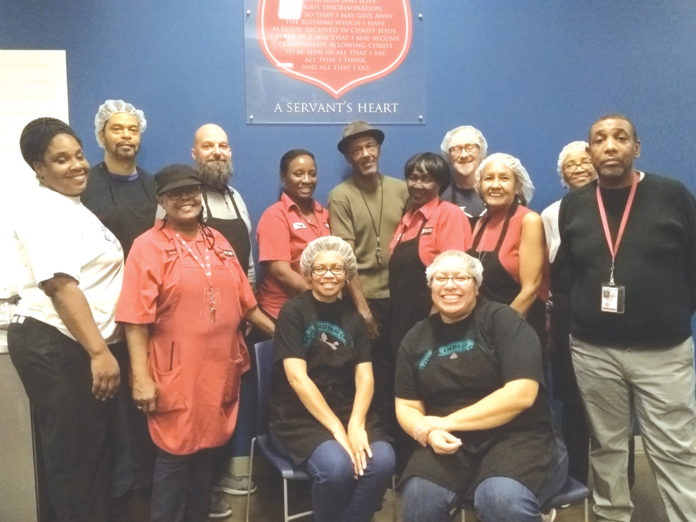Oklahoma Insurance Commissioner Glen Mulready has named Brian Downs to serve as Chief of Staff for the Oklahoma Insurance Department (OID). A native Oklahoman, Downs currently serves as the State Health Information Exchange Director and Special Assistant to the Governor’s Front Porch Initiative.
“Brian’s leadership experience, professionalism and his tireless commitment to Oklahoma citizens make him a perfect fit for this position,” Mulready said. “He has built a level of trust and respect with state and national leaders on both sides of the aisle. I am confident that his leadership will maintain the positive momentum as we continue to move forward with our team’s vision of becoming a Top 10 insurance department.”
Downs previously served as Chief of Staff for Speaker Jeff Hickman in the Oklahoma House Representatives and Chief of Staff and Director of State and Federal Policy at the Oklahoma State Department of Health.
“Commissioner Mulready continually challenges the Department staff to strive for their best as they serve the public. He’s not afraid of changes and he’s dedicated to making OID a Top 10 insurance department. Following his example, I will champion Commissioner Mulready’s vision and do my best to serve Oklahomans in this role,” Downs said.
Downs will begin his new role on January 30th, 2020.
If you have questions about other insurance issues, contact the Oklahoma Insurance Department at 1-800-522-0071 or visit our website at www.oid.ok.gov.
Insurance Commissioner Mulready Announces New Chief of Staff
NEW MEDICAL DEVICE ALLOWS PATIENT TO CONTINUE ACTIVE LIFESTYLE
Ralph Shelton, Ph.D., of Perkins, lived with the effects of stress incontinence for more than five years following surgery for prostate cancer, until his physician, Ash Bowen, M.D., OU Medicine urologist, suggested the ProAct system.
According to the American Urological Association, between six and 20 percent of men continue to experience the life-disrupting impact of stress urinary incontinence a full year after prostatectomy. Approved by the Federal Drug Administration in 2017, the ProAct system is a device that addresses incontinence and restores quality of life for many men who deal with the challenges of this condition.
Late last year, Shelton was among the first Oklahoma to undergo the procedure to implant the ProAct system. “It’s a complete turnaround from where I was,” he said.
Bowen explained that urinary incontinence is a very distressing condition, an unfortunate but common consequence that occurs in connection with prostate surgeries, including radical prostatectomy or transurethral resection of the prostate. Physical movement or activity, from coughing or sneezing, to more vigorous activities such as running, lifting and other physical exertion, creates stress on the bladder. “When the muscles surrounding the bladder and urethra are damaged, that loss of muscular support causes incontinence, which may range in severity from very minor leaks to extreme – total loss of urinary control.”
The ProAct implantable device consists of two small, adjustable balloons, connected through short tubes to an injection port. Inserted on each side of the urethra during a short outpatient procedure, these fluid-filled balloons keep pressure on the bladder to help prevent urine leakage. The ports make it possible to adjust the pressure as needed to meet a patient’s individual needs.
The leakage Shelton lived with required the use of absorbent pads all the time. “It was embarrassing; there was always a risk when I went anywhere or tried to participate in any activity. Intimacy was awkward and less than confident,” he said.
Bowen said Shelton was a prime candidate for the surgery: he was doing well after prostatectomy, had no underlying health conditions, was physically active, and was ready and willing to find a solution to the incontinence problem he had endured for years.
The device has been widely used in Europe since 2002, and follow-up studies in the United States are promising for long-term (five years or more) benefits.
“The device is safe and effective,” Bowen said. “Potential complications are only what might be expected with any surgical procedure – risk of infection or reaction to anesthesia, for example. Side-effects encountered with the ProAct device are mild and easily managed.”
He cited a number of patient benefits related to the procedure itself. “The procedure typically takes only 30 minutes, is minimally invasive and is performed under general or local anesthesia in an out-patient setting – no hospitalization. There are no sutures or other anchoring devices. Most men experience only minor discomfort, if any.”
Shelton confirms that discomfort was minimal, and that the procedure was simple from the patient’s perspective. “I was back to my routine, daily activities quickly.”
If adjustments are needed, these also can be done non-surgically in an office setting. Shelton recently had one such adjustment with excellent results.
“Immediately after the procedure, I wasn’t sure there was much difference, but healing and recovery came quickly, and leakage began to decrease significantly. After one adjustment to increase the pressure, it works perfectly. It’s as if I never had a problem at all. I feel like I have my life back – I’m 100% normal.”
With a doctorate in adult education, Shelton taught generations of professional educators various techniques and methodologies to promote successful learning. In addition, he expanded his career, using his expertise to assess employer needs to ensure optimal hiring practices, matching a candidate’s skill set to the employer’s desired work objectives. He enjoyed ongoing opportunities to use these skills in retirement, until incontinence began to limit his activities.
Several years into retirement, he has no plans to resume an ambitious schedule of professional engagements, but the ProAct device does mean he can consider options that may not have been possible for him before the procedure. He continues to stay active and engaged in pursuits that use his well-honed skills of analysis. He currently works as a heavy equipment specialist for a local tractor dealership, once again using his expertise to assess needs and find solutions.
“Some may call it ‘odds and ends,’ but it’s still important to me to help people find ways to succeed. I’m something of a career-tech consultant, which offers me opportunities to travel, meet people and help facilitate a teamwork mentality. Now I know I can continue to do that that on my own terms, not limited by inconvenience or anxiety about accidental leakage.”
While a referral by a primary care provider is not considered necessary, it may be required for coverage under some healthcare plans. Bowen sees patients at OU Physicians Edmond, located in the Fountain Lake Center, 14101 N. Eastern, Suite E, and performs the ProAct procedure exclusively at OU Medical Center Edmond, One South Bryant. For an appointment, call (405) 340-1279.
TRAVEL / ENTERTAINMENT: A Treasure Hunt on display in Idabel, Oklahoma
Photography and Text by Terry “Travels with Terry” Zinn t4z@aol.com

It’s not often that a call goes out for missing paintings from a recently deceased artist. But such is in progress with the Museum of the Red River in Idabel, Oklahoma. Home to the late Harold Stevenson,(1929-2018) The museum hosted a call for his works for display in a retrospective to be held at the museum March 10 – June 7, 2020.
There is a scheduled toast to the Martini cocktail, one of Harold’s social trademarks, at a future reception. In 1995 I was re-introduced to the Martini over a lunch with Harold and subsequently remember Harold with each of my Martinis. http://www.martinitravels.com/philosophy-of-the-martini.html
There is a famous Stevenson painting called “The Eye of Lightning Billy.” In tribute to that you see here my photograph of Harold holding the cocktail glass subject of his “Martini Man” painting made in Wainscott. I have entitled my photo, “The Hand of Harold Stevenson.”
Harold Stevenson was honored with a Legislative proclamation at the Oklahoma State Capitol on the afternoon of April 19, 2017, followed by a public reception.
The recognition came as a result of decades of exhibitions with Harold’s studios ranging from Paris, to Idabel Oklahoma, Key West, and Wainscott, New York. As a native from Idabel Oklahoma, he returned to his beloved community as an example of the circle of life. He returned to his childhood home on Avenue A and subsequently passed it on to his nephew who built him a cabin in the Idabel woods.
In a 1998 Persimmon Hill Magazine interview by M.J. Van Deventer, she writes: “Harold Stevenson was drawing and using colors even before he learned to write his name. “I invented painting all by myself,” he says. Today, he is considered an iconoclast, an uncompromising artist who listened only to his own voice and paints the subjects that bring him the greatest pleasure.”
Stevenson was born on March 11, 1929 in Idabel and died there in 2018. Growing up in Idabel Harold was readily accepted by his neighbors when he asked to paint their portraits which later resulted in a larger than life exhibition of his works titled, The Great Society. With encouragement from the founder of the Oklahoma Art Center in Oklahoma City, Nan Sheets, Harold received education from the University of Oklahoma in 1947, Mexico City College, and studied under Yasuo Kuniyoshi and Max Schallinger.
Decades later his larger than life portraits were accepted into the Fred Jones Junior Museum of Art’s permanent collection accompanied with a monumental exhibition. The Museum recently accepted a collection of Harold’s paintings from longtime friend, Buddy Dugan, from Dugan’s San Francisco’s home collection.
Besides the Fred Jones Junior Museum of Art collection, his works are also in the permanent collection of New York’s Whitney Museum, the Guggenheim, and the Oklahoma City Museum of Art. Besides other exhibitions his reclining panoramic portrait, inspired by actor Sal Mineo, is in the Guggenheim. Of note was his huge painting of Spanish bullfighter, El Cordobes, when it was hung from the Eiffel Tower. Harold is best known for his large canvas paintings, some ranging from six feet by ten feet.
Harold’s contemporaries and acquaintances included artists; Marcel du Champs, Jackson Pollack, Andy Warhol, Poteet Victory and philanthropist Peggy Guggenheim where he visited her at her Venice palazzo. He has been described as one of the art worlds icons with work that spans almost seven decades. He is part of a generation that was once classified by a 1962 art show in New York City as the “New Realists.” With an avid interest in classical history Harold Stevenson’s subject matter includes realistic depiction of classical subjects, Oklahoma cowboys, native Americans, landscapes and an admiration of the human form.
This exhibit of Stevenson’s art at the Museum of the Red River, is a rare opportunity to see a retrospective of a home town artist presented in his home town.
For information on museum hours and of public receptions visit; The Museum of the Red River, at 812 E Lincoln Rd, Idabel, OK 74745 (580) 286-3616 PR@motrr.org
More information on Harold can be found: www.museumoftheredriver.org/harold-stevenson-exhibit-planned-for-2020 or his official website, www.HaroldStevenson.com.
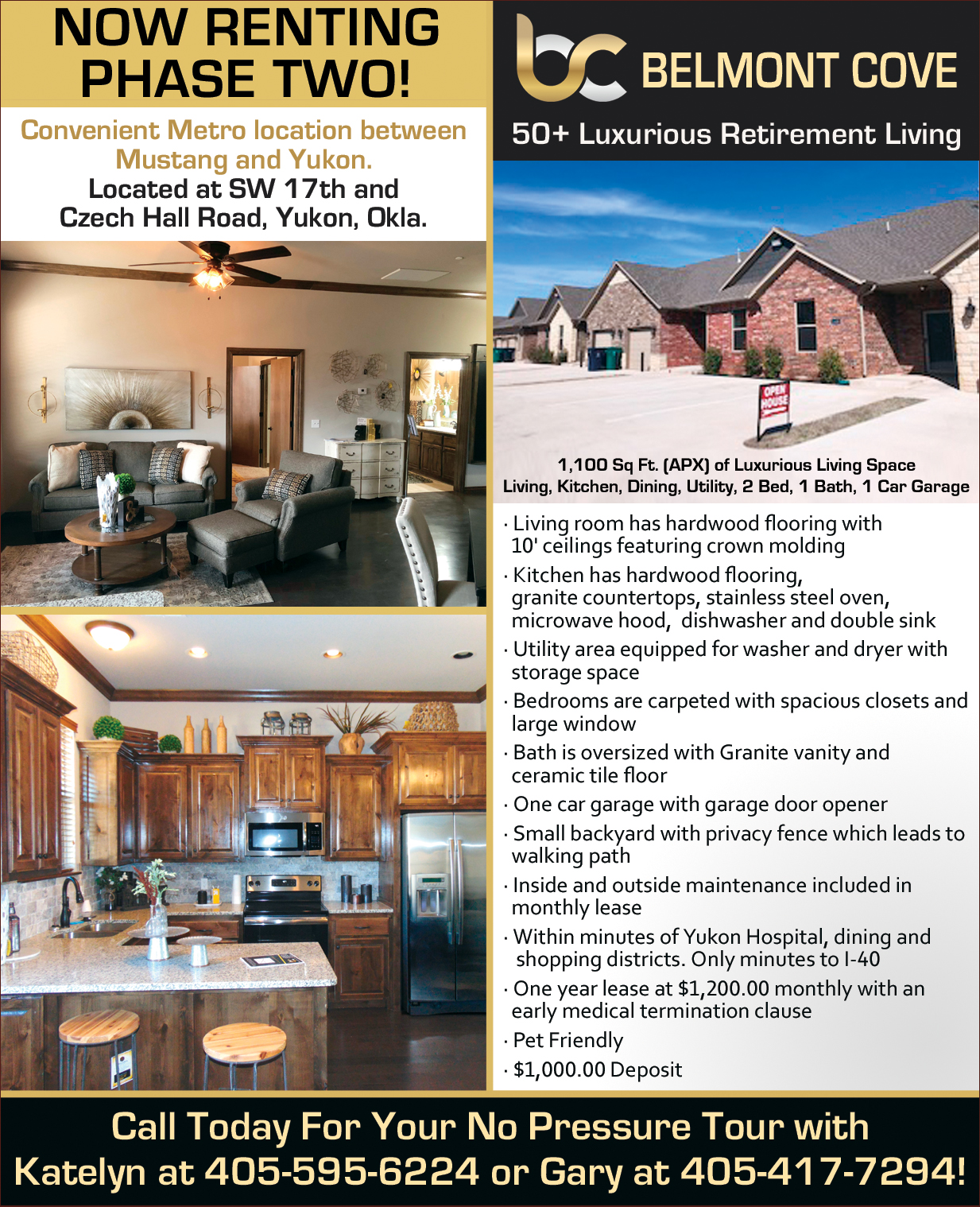
GIFT TO ESTABLISH COMPREHENSIVE NUTRITION CENTER AT THE CHILDREN’S HOSPITAL

David and Cory LeNorman have a unique perspective on the critical nutritional needs of newborns and a heightened awareness of the demand for extraordinary care. Their daughter, Quincy, was born 24 weeks into pregnancy, much earlier than the 38- to 40-week period considered optimal by neonatology experts. The family’s personal experience was the driving force behind their dream, and motivated the $1.5 million gift made to establish the Quincy LeNorman Nutrition Center at The Children’s Hospital at OU Medicine. The gift will significantly advance the care provided at the nationally ranked hospital, adding state-of-the art technologies that further elevate best practices in nutritional science.
“We’re both grateful and delighted to accept this generous gift presented by the LeNorman family,” said Jon Hayes, president, The Children’s Hospital. “It perfectly joins the long-held, shared vision of hospital and physician leaders with the heartfelt desire of the LeNormans. Thanks to this funding, we’ll realize a mutual goal to build upon and expand nutrition services that are vital to health and healing of the children we care for at The Children’s Hospital.”
Born weighing less than two pounds, Quincy LeNorman, the center’s namesake, spent the first 88 days of her life in the Neonatal Intensive Care Unit at Children’s. Now 17, she thrives as a student who plays high-school soccer, with no evidence of an early struggle for life. Quincy’s mother, Cory LeNorman, said her pregnancy was normal in every respect, with no hint of trouble until two days before delivery.
“The reason Quincy is here today is because of the great support we received – skilled and dedicated nurses, doctors and other personnel, and a facility that was equipped to provide the best possible care.”
Nearly three months after her birth, Quincy was discharged from the NICU. But the LeNormans never forgot the labor of love that gave Quincy a chance at life. In years that followed, David and Cory began to consider ways to give back that would match their keen interest and address identified needs at The Children’s Hospital.
At the same time, NICU personnel and hospital leaders envisioned better ways to meet their patients’ diverse nutritional demands. Laying the groundwork to bring the vision to reality, leaders toured several NICU centers in the Dallas/Ft. Worth area, observing best practices in neonatal nutrition handling, touring thoughtfully planned facilities, and identifying a model to emulate at Children’s.
Trent Tipple, M.D., neonatology specialist and chief of Neonatal-Perinatal Medicine, The Children’s Hospital, said, “The Children’s Hospital is where the state’s tiniest and most vulnerable patients come for the level of care their complex conditions require. The future center represents another major step forward in neonatal nutrition. Thanks to the LeNorman family, we will have greater capacity to deliver life-saving technologies and redefine excellence in neonatal care.” One of the significant components that will distinguish the new nutrition center will be its use of sophisticated software that will track and analyze detailed metrics information. A human milk analyzer will determine how and to what extent milk must be fortified to meet specific nutritional needs. It will also identify babies whose growth is not progressing adequately.
Jamie Kilpatrick, M.S., R.N., CENP, director of the Neonatal Intensive Care Unit at Children’s, said, “Currently, formula and human milk preparation for neonates is done in a small human milk lab, which we have already outgrown. Feeding preparation for other hospitalized children occurs in a separate area. All services are performed by excellent and expert hospital team members who follow best practices to meet high-reliability nutrition demands. However, a more seamless operation – more centralized and expanded for greater efficiency – will support our capacity to supply the best nutritional services possible on a broader scale.” The proposed nutrition center will benefit not only babies receiving care as NICU patients, but other infants and pediatric patients who face a range of complex feeding needs. These special needs may be related to specific treatment, care or rehab related to surgery, or due to other unique nutritional deficits or sensitivities.
FEB/MAR AARP Drivers Safety
Date/ Day/ Location/ Time/ Registration #/ Instructor
Feb 6/ Thursday/ Okla. City/ 9 am – 3:30 pm/ 951-2277, C-509-0727/ Varacchi Integris Wellness Center – 5100 N. Brookline, Suite 100
Feb 6/ Thursday/ Norman/ 9 am – 3:30 pm/ 307-3177/ Palinsky
Norman Regional Hospital – 950 N. Porter Ave.
Feb 6/ Thursday/ Midwest Cit/ 08:30 am – 2:30 pm/ 473-8239/ Williams Midwest City Senior Center –
Feb 7/ Friday/ Okla. City/ 8:30 am – 3 pm/ 405-721-2455 ext 0/ Kruck Baptist Village – 9700 Mashburn Blvd
Feb 8/ Saturday/ Midwest City/ 9 am – 3:30 pm/473-8239/ Williams
First Christian Church – 11950 E. Reno Ave.
Mar 5/ Thursday/ Okla. City/ 9 am – 3:30 pm/ 951-2277, C509-0727/ Varacchi Integris 3rd Age Life Center – 5100 N. Brookline, St. 100 S.W. Medical Center – 4200 S. Douglas, Suite B-10
Mar 13/ Friday/ Okla. City/ 9 am – 3:30 pm/ 951-2277, C 691-4091/ Palinsky added cell number
Feb 12/ Wednesday/ Warr Acres/ 8:30 am – 3:30 pm/ 789-3202/ Kruck ###Cancelled ##
Warr Acres Community Center – Waiting confirmation on location
Feb 14/ Friday/ Okla. City/ 9 am – 3:30 pm/ 951-2277, C 691-4091/ Palinsky added cell number
S.W. Medical Center – 4200 S. Douglas, Suite B-10
Feb 7/ Friday/ Okla. City/ 8:30 am – 3 pm/ 721-2466 ex 2163/ Kruck
Baptist Village – 9700 Mashburn Blvd
Feb 8/ Saturday/ Midwest City/ 9 am – 3:30 pm/ 473-8239/ Williams
First Christian Church – 11950 E. Reno Ave.
Feb 12/ Wednesday/ Warr Acres/ 8:30 am – 3:30 pm/ 789-3202/ Kruck
Warr Acres Community Center – Waiting confirmation on location
The prices for the classes are: $15 for AARP members and $20 for Non-AARP. Call John Palinsky, zone coordinator for the Oklahoma City area at 405-691-4091 or send mail to: johnpalinsky@sbcglobal.net
Social Security Launches New Campaign to Fight Scammers
The Social Security Administration launched a new Public Service Announcement (PSA) campaign to continue warning people about the ongoing nationwide telephone impersonation scheme. The PSAs feature a message from Social Security Commissioner Andrew Saul. Social Security and its Office of the Inspector General (OIG) continue to receive reports about fraudulent phone calls from people falsely claiming to be Social Security employees. The scammers mislead victims into making cash or gift card payments for help with purported identity theft, or to avoid arrest for bogus Social Security number problems.
“I want every American to know that if a suspicious caller states there is a problem with their Social Security number or account, they should hang up and never give the caller money or personal information. People should then go online to oig.ssa.gov to report the scam call to Social Security,” said Commissioner Saul.
People should also be on the lookout for a new version of this scam. Fraudsters are now emailing fake documents in attempts to get people to comply with their demands. Victims have received emails with attached letters and reports that appear to be from Social Security or the OIG. The letters may use official letterhead and government jargon to convince victims they are legitimate; they may also contain misspellings and grammar mistakes.
Booksale 2020 to Celebrate 40-year Run
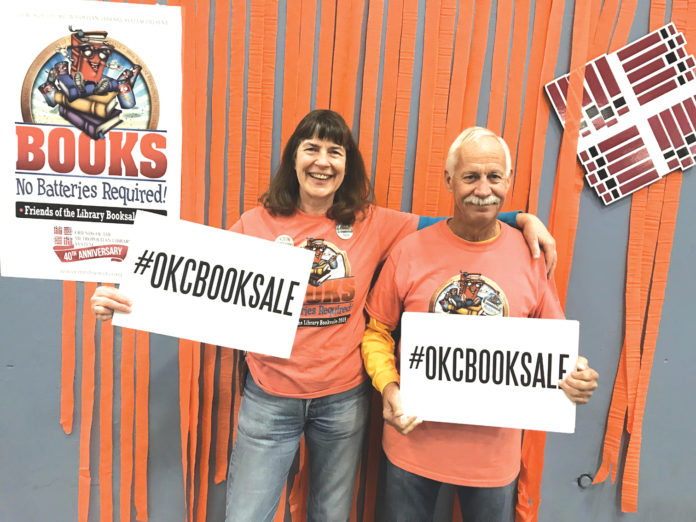
Story by Darl DeVault
Seniors still prefer books and make up many of the volunteers and customers at the huge two-day Friends of the Library Booksale 2020 February 22 and 23 at the Oklahoma State Fairgrounds. As thousands of book lovers gather in the Oklahoma Expo Hall the sale proves in the world of digital access, the Age of the Book is still with us.
Subtitled “Booksale—40 Years Strong”, the annual sale provides a diverse selection of books, CDs, DVDs, magazines and more for every demographic of customers.
“It is amazing the wide range of subjects—including fiction, nonfiction, cookbooks, biographies, medical, westerns, romance, children’s, encyclopedias, reference and foreign language, plus a large selection of music, DVDs and audio books,” said Don Dory, 73, Booksale Coordinator. “Thousands of shoppers have been coming for years for our wide selection and low prices. In the General Area, hardback books are one dollar each and paperbacks and magazines are 50 cents each. Collectors go for the Items in the Better Books Room which vary in price, mostly under $5.”
The nonprofit Friends of the Library has used this book sale to raise money to support the Metropolitan Library System. In it’s now 40-year run, the Friends have given more than $4.8 million in grants to the system. All of this is due to the tireless efforts of hundreds of volunteers each year.
Almost five million dollars in 40 years is a big number and so is the 800,000 books available this year. All this means the sale becomes the largest nonprofit bookstore in Oklahoma for three days.
“Customers run the gamut of need—many trying to select best sellers, classics, collectibles and research books needed for school,” Dory said. “Thousands will be seeking to complete personal libraries in certain subjects, while parents will be striving to enhance their children’s reading exposure.”
Friends of the Metropolitan System members can shop a Presale from 1 to 9 p.m. on Friday, Feb. 21. Held the day before the sale goes public, members are invited to first access. Annual memberships are available for $15 in the lobby starting at noon. Children 12 and under accompanied by an adult are free.
After 40 years, the sale is well established on the literary sale calendar for customers coming from all over Oklahoma, surrounding states and the whole region. Selective shoppers are advised to join the nonprofit to ensure the best possible purchasing opportunity.
Book lovers line up all three days awaiting the door’s opening. A quick survey of the parking lot shows that many of those customers are from out of state, coming to Oklahoma each year for the huge selection. The multi-day event attracts more than 10,000 book lovers.
In some ways the diverse selection offered represents a snapshot of a high-quality American publishing museum with the bonus that everything is available for purchase.
“Donated all year from various sources, the books are both common and select, while the other offerings are extremely varied, even including music,” said Beth Toland, 65, publicity chairperson. “This diversity means the sale is in one sense our states largest literary event.”
Admission is free 9 a.m. to 5:30 p.m. Saturday and Sunday, Feb. 22 and 23.
The shopping is so robust that a dozen checkout points are offered by volunteers in each of the two sections. And yet, so many customers arrive early a line forms for the first few hours each day. The book shopping is intense, almost competitive, as this is a once a year opportunity.
Customers, depending on their need for new reading material, come with a wide variety of book hauling capability, as there are no shopping carts provided. Shoppers will see every form of wheeled cart pressed into service by other shoppers as they move among the tables laden with thousands of books. Large boxes are everywhere as some shoppers limit themselves to just those books they can carry.
The volunteers display 40 years of expertise in staging the sale by sorting the books into sections. Those sections are a wide cross section of interest, from tables of books by Oklahoma authors to books about Oklahoma.
Some years special sections offer brand new books donated when book stores and Oklahoma publishing houses use their donations as a way to balance their inventory.
Many business and industry concerns are well represented when entities going out of business donate their libraries. Retiring attorneys provide shoppers the chance to buy law books at a steep discount.
Volunteer shifts are still open, as the group is still looking for volunteers! To volunteer or for more information about Booksale, visit www.mlsfriends.org. For additional questions contact the Friends at 405 606-3763 or friends@metrolibrary.org.
Salvation Army Red Shield Kitchen Recognized
The National Indian Council on Aging (NICOA) Senior Community Services Employment Program (SCSEP) partners with The Salvation Army Red Shield Kitchen to train program participants as cooks and kitchen assistants. During the process, participants learn the state guidelines for properly handling food, how to properly clean and sanitize, as well as train for food handlers license. The training prepares participants to become employable based on their training. It’s a win win!
THE RED SHIELD KITCHEN – A Servant’s Heart
There is a sign hanging in the dining area of The Salvation Army Red Shield, it reads “I serve out of gratitude and thanksgiving for what God has done for me. I serve not to receive status, awards, attention, or even appreciation from man. I serve with a heart of compassion and love without discrimination. I serve so that I many give away the blessing which I have already received in Christ Jesus. I serve in a way that I may become transparent, allowing Christ to be seen in all that I say, all that I think, and all that I do”. This truly represents the staff at The Red Shield Kitchen. Keri Griffin, Kitchen Manager was overjoyed, she stated “NICOA means the world to me because I have trained and hired 15 people.” Keri indicates she loves the work the participants do and that they put forth their best efforts as well as given a chance they teach her new things along the way. This makes Keri happy to know she had a little something to do with motivating and inspiring others that bring out the best in her. Each participant just needed a chance, a skill, and to believe in themselves to find something that they truly love to do.
The NICOA SCSEP staff and staff participants each gave one word to describe November 16, 2019, the day of giving back and saying thank you. The words were Amazing, Engaging, Gratifying, Rewarding, and Hope! The most memorable moment was witnessing a family reunited in the dining room. The most notable moment everyone appeared to be similar in many aspects. We have the same hopes, dreams, goals, needs and challenges.
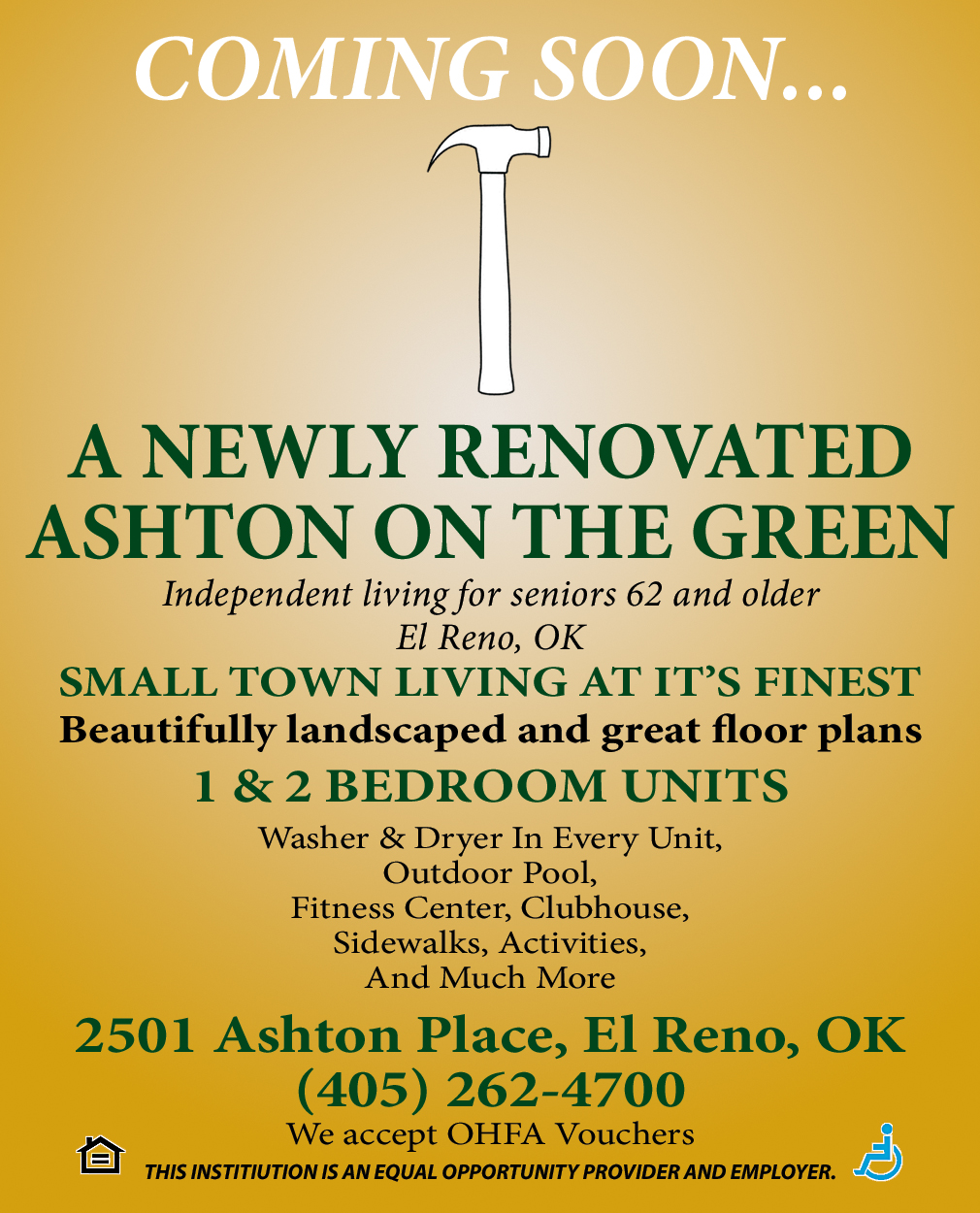
OKC ZOO ANNOUNCES GORILLAS ON THE LINE AND CONNECT WITH WILDLIFE CHALLENGE
Answer the call to protect gorillas by donating old phones and disconnect from tech with two exciting new Zoo initiatives
Gorillas on the Line – Saturday, February 1 through Thursday, April 30
When gorillas are on the line, it’s up to us to answer the call! The Oklahoma City Zoo and Botanical Garden is looking to the community-at-large to help save gorillas by donating old or used cellphones to the Zoo for recycling as part of Gorillas on the Line from Saturday, February 1 through Thursday, April 30. The Zoo is home to 10 western lowland gorillas, five males and five females, ranging in age from 34-year-old Emily to 19-month-old Finyezi. The species is critically endangered with only about 350,000 individuals remaining in the wild.
“Small electronics like cellphones frequently contain a substance called coltan and 80 percent of the world’s supply is in the Democratic Republic of the Congo, an area also home to many gorillas,” said Stephanie Smith, OKC Zoo senior primate caretaker. “Mining for coltan threatens the habitats of gorillas, chimpanzees, okapi and other endangered species. When individuals donate used phones or other electronics, the coltan from those devices is re-used and reduces the need to mine for the compound in gorilla habitats.”
Schools, organizations, businesses and individuals are encouraged to collect as many cellphones and electronics as they can in support of gorilla conservation. Last year, over 260,000 people were engaged in the campaign, collecting 12,486 devices that were recycled and raising $6,055 for gorilla conservation. For 2020, Gorillas on the Line hopes to collect 20,000 cell phones for recycling and engage 200,000 children and other community members in gorilla conservation action. Any kind of cellphone will be accepted – even the big, heavy ones from years ago that wouldn’t come close to fitting in your pocket now. Acceptable small electronics include: iPods, iPads, tablets, MP3 players and handheld gaming systems. These items can be dropped off for recycling in the Zoo’s Guest Services office in the entry plaza.
An added incentive: those who bring an old cellphone or small electronic device to donate to “Gorillas on the Line” will receive two Zoo general admission passes valid through April 30, 2021. Guests are welcome to donate additional devices, but will only receive two Zoo passes as a thank you for helping save gorillas.
Connect with Wildlife Challenge – Sunday, February 2
Here’s a wild idea–disconnect from your cell and reconnect with nature at the Oklahoma City Zoo! On Sunday, February 2, in exchange for free general admission, the Zoo is challenging guests to unplug from their mobile phones during the duration of their visit. Guests who feel up to the “Connect with Wildlife Challenge” can securely check-in their cellphones at the Zoo’s Guest Services office (located in the entry plaza) before exploring the park.
“Collectively, we have become so reliant on our smart phones that we fail to engage with the world around us,” said Greg Heanue, OKC Zoo chief marketing officer. “It’s our hope that guests who participate in the challenge will be more present and better connect with friends, family and the amazing wildlife that surrounds them. For those that take the challenge and value their wildlife connection, perhaps they’ll be inspired to go screen-less more often.”
Get back (and give back) to nature at the OKC Zoo! Located at the crossroads of I-44 and I-35, the Oklahoma City Zoo is a proud member of the Association of Zoos and Aquariums, the American Alliance of Museums, Oklahoma City’s Adventure District and an Adventure Road partner. Hours of operation are 9 a.m. to 5 p.m. daily. Regular admission is $11 for adults and $8 for children ages 3-11 and seniors ages 65 and over. Children two and under are admitted free. Effective Saturday, February 1, regular admission is $12 for adults and $9 for children ages 3-11 and seniors ages 65 and over. Children two and under are admitted free. Stay connected with the Zoo on Facebook, Twitter and Instagram and by visiting Our Stories. To learn more about other happenings, call (405) 424-3344 or visit okczoo.org.
Crawford Named Senior Associate Dean and Director of New College of Medicine Program
The University of Oklahoma College of Medicine announces family medicine physician Steven Crawford, M.D., as the Senior Associate Dean and director of the newly formed Office of Healthcare Innovation and Policy.
The Office of Healthcare Innovation and Policy was launched to harness resources within the college and across the academic healthcare enterprise to address the social determinants of health – the social factors that significantly impact health conditions among Oklahomans. Crawford has been serving as chair of the Department of Family and Preventive Medicine for 20 years and brings a background and dedication to helping people achieve better health in their own communities. “As part of an academic health center, a significant part of our mission at the OU College of Medicine is to create partnerships with communities across the state, whether rural or urban, to help people get the resources they need to improve health,” said John Zubialde, M.D., Executive Dean of the OU College of Medicine. “Approximately 75% of the care we provide is for people with chronic illness. Once they leave the doctor’s office or hospital, they must manage their conditions, such as diabetes and cardiovascular disease, in their home and community settings. We want to work with communities and health systems to find innovative solutions to support those patients.”
Crawford will begin his role with the Office of Healthcare Innovation and Policy by taking an inventory of the numerous resources across campus and coalescing them in a strategic fashion. Crawford has extensive experience with many such projects, including Healthy Hearts for Oklahoma, begun in 2015 with a $15 million federal grant from the Agency for Healthcare Research and Quality. OU’s healthcare providers worked with approximately 300 small primary care clinics across Oklahoma to incorporate and standardize four guidelines known to decrease the risk of cardiovascular disease: low-dose aspirin in high-risk patients; controlling blood pressure; cholesterol evaluation; and smoking cessation assistance. OU provided the expertise to help clinics establish guidelines into the regular flow of their practices and the technology to measure outcomes. Crawford also brings a background in advocacy for healthcare innovation at the state Capitol, as well as policymaking with the Oklahoma Health Care Authority, which administers the state’s Medicaid program. He works closely with the Oklahoma State Department of Health, both the Oklahoma and American Academy of Family Physicians, and the Oklahoma Hospital Association, among others. He is also a leader for the College of Medicine’s program to prevent opioid crisis, and he directs a workforce grant to recruit and retain more health professions students from diverse and underserved populations.
“I am grateful to be named to this role and to lead our Office of Healthcare Innovation and Policy,” Crawford said. “I believe this type of effort, involving the expertise of people across our campus and state, will improve Oklahoma’s health outcomes and the quality of life for people across our state. The medical care we deliver is important, but equally so are the resources for our patients in the communities where they live.”
The work of the Office of Healthcare Innovation and Policy also dovetails with that of the OU Hudson College of Public Health, whose focus is the science of protecting and improving the health of people in their communities. The Hudson College of Public Health has strong partnerships across the state and beyond to develop strategies toward improving the health of an entire population, rather than treating acute illnesses as they arise. Social determinants of health range from safe housing and local food markets to educational and job opportunities to socioeconomic conditions, and much more.
“The future of our healthcare system – and the health of our population – requires that the disciplines of public health work together with clinical medicine in a coordinated way,” said Gary E. Raskob, Ph.D., Dean of the Hudson College of Public Health. “The medical care a person receives is crucial and lifesaving, but about 40% of our total health outcome is shaped by the ‘upstream’ factors before an individual sees a physician, such as their social circumstances and lifestyle choices.”
As a locally owned, nonprofit healthcare system, OU Medicine is invested in creating a healthier future for the state and, as a teaching campus, it is training future health professionals to advocate for their patients beyond the hospital or clinic. Crawford is the ideal person to lead the mission of the Office of Healthcare Innovation and Policy, said Chuck Spicer, President and CEO of OU Medicine.
“I have witnessed Dr. Crawford’s care and compassion for his patients, both as my personal physician and a close friend,” Spicer said. “He understands that the care we provide shouldn’t end after a doctor’s appointment or a hospital discharge. Instead, our patients should return home to find innovative support developed through a relationship between OU Medicine and the community.
“As a comprehensive academic health center, we keep the patient at the center of everything we do,” Spicer added. “We are dedicated to addressing healthcare innovation and the social determinants of health from a physician-driven and research-driven perspective. That makes us unique in the state of Oklahoma and is a mission that we are excited to grow.”
www.okala.org



